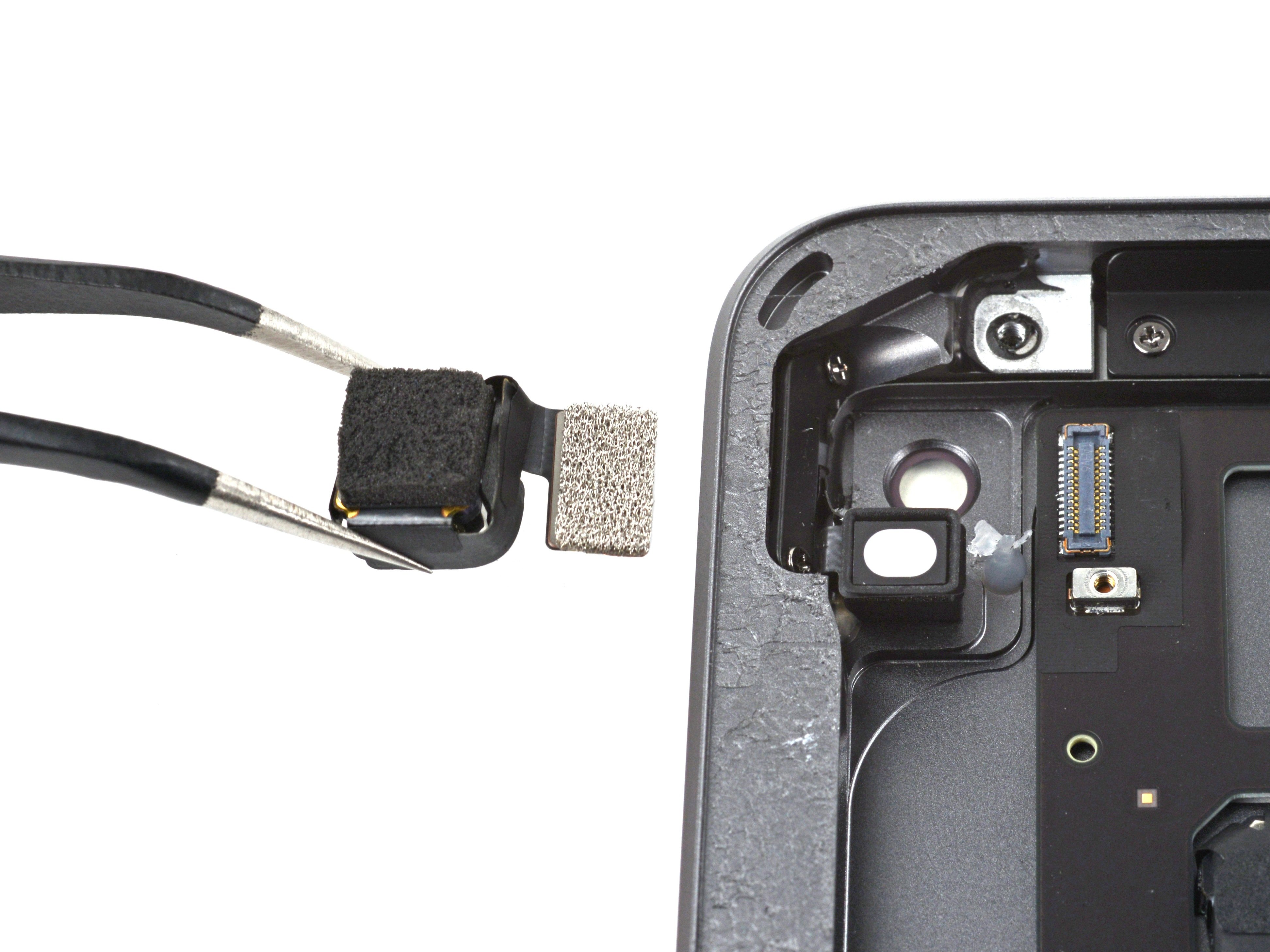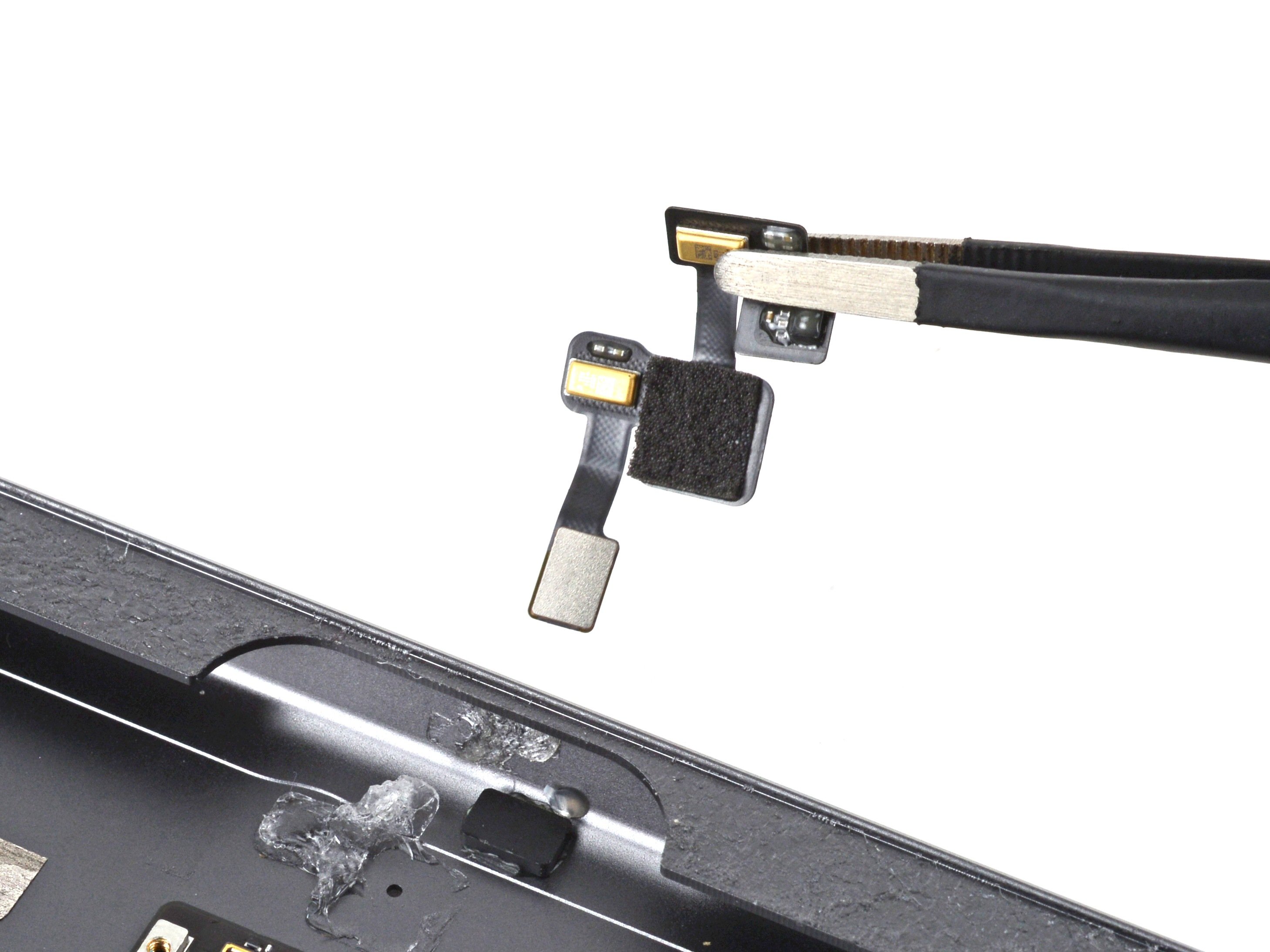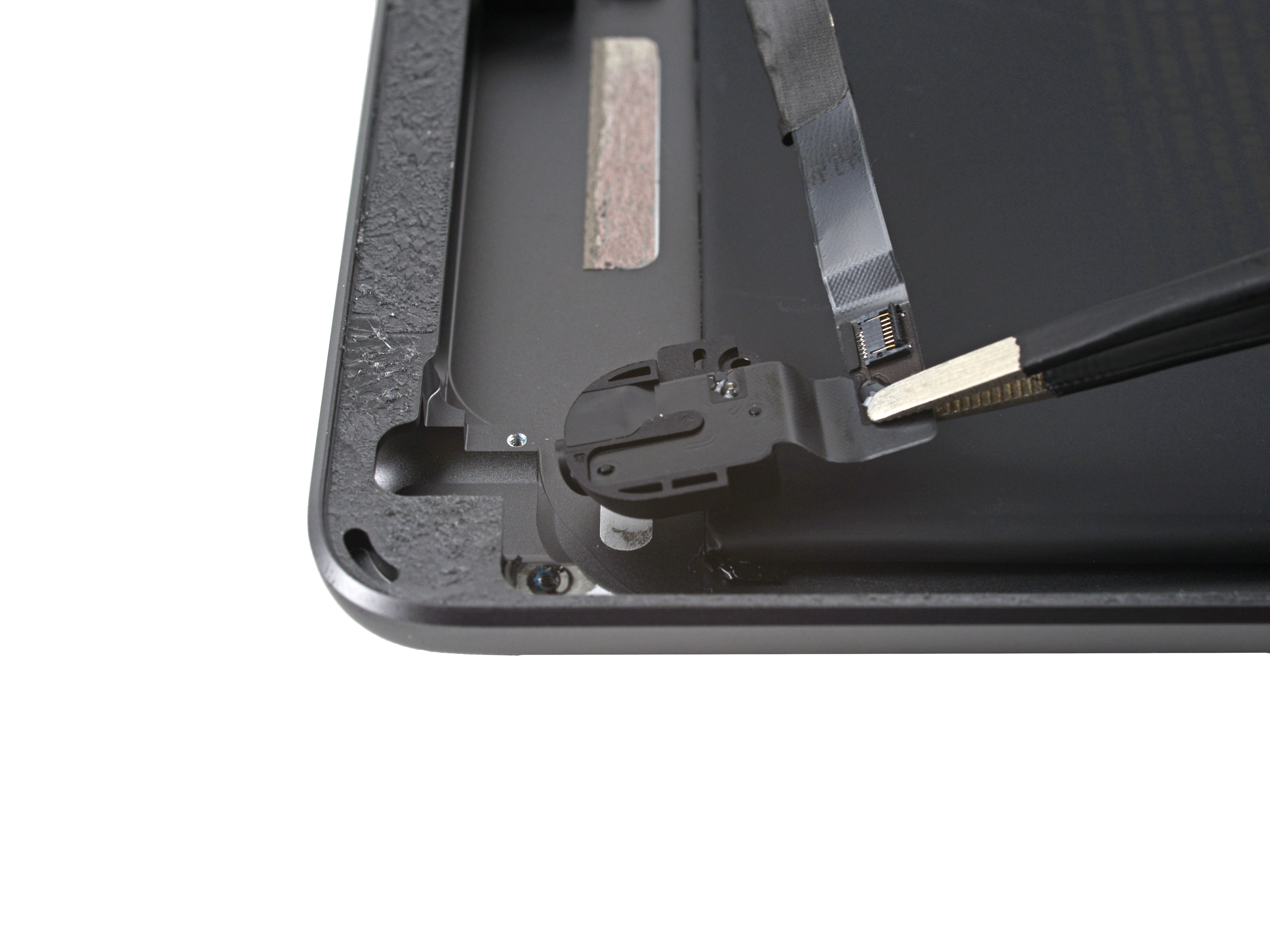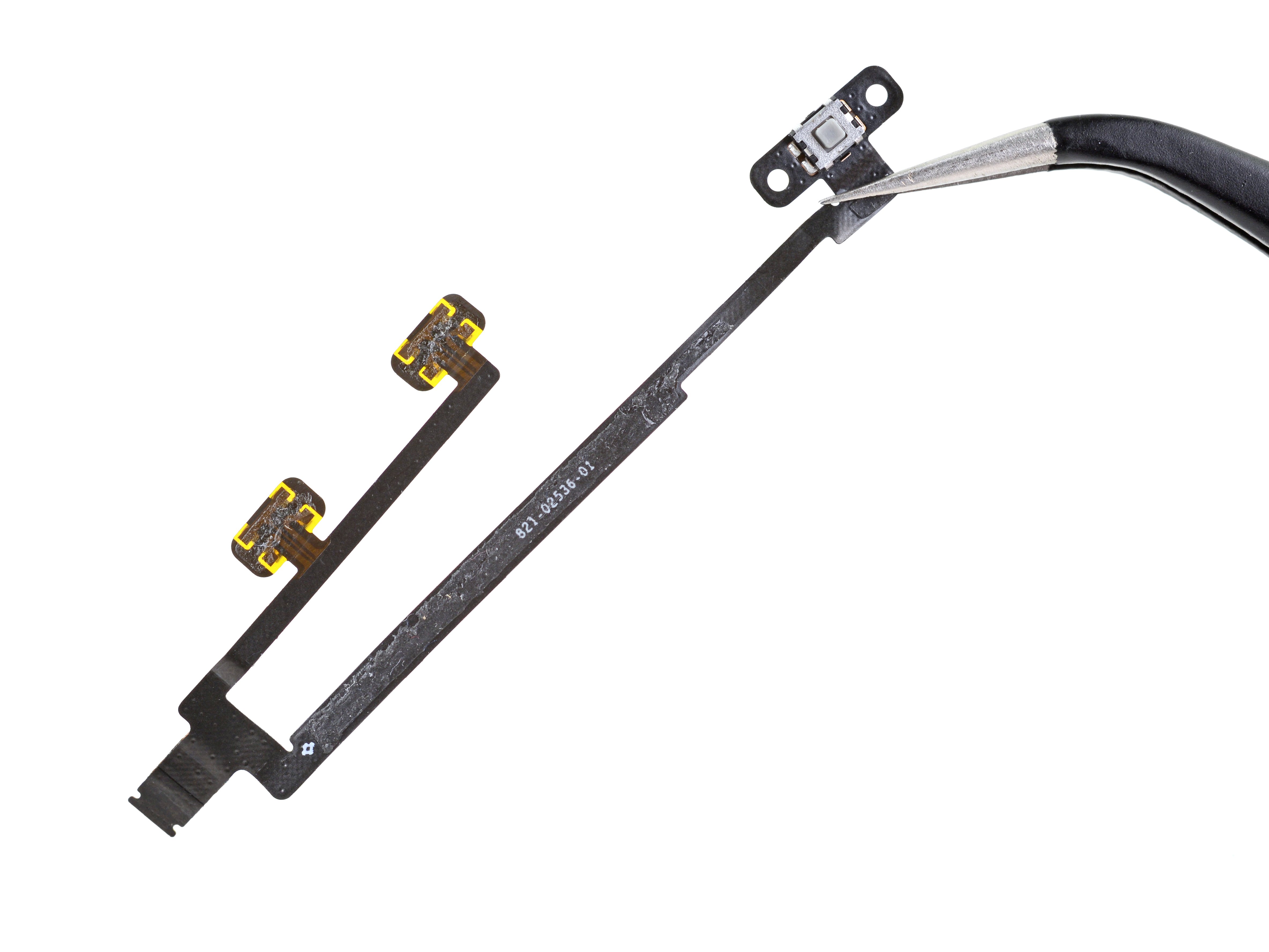DIY iPad CDMA SIM Board Replacement Guide: Step-by-Step Tutorial
Duration: 45 minutes
Steps: 48 Steps
Hey there, repair superstar! Before you dive in, just a friendly reminder: take a moment to double-check that you have all the necessary tools at your side. If you find yourself in a pinch or need an extra hand, feel free to schedule a repair. You’ve got this!
Ready to swap out that SIM Board? You’ve come to the right place! Let’s dive in and make your device happy again. If you need help, you can always schedule a repair.
Step 1
It’s a good idea to give your microwave a little scrub before you dive in, as any leftover gunk on the bottom could end up hitching a ride on the iOpener.
– Pop the iOpener right in the middle of the microwave and let it soak up those toasty vibes!
Tools Used
Step 2
Watch out for overheating your iOpener during the repair! Getting it too hot could make it pop, and nobody wants that. Keep it under 100˚C (212˚F) to stay safe and sound.
If your iOpener looks a little puffed up, give it some space – don’t touch it!
If the middle of your iOpener is still too toasty to handle, keep using it while it cools down a bit before you reheat. A well-heated iOpener should stay nice and warm for about 10 minutes. You’ve got this!
– Give that iOpener a cozy thirty seconds in the microwave to get it nice and toasty!
– As you work through the repair, keep an eye on the iOpener. When it starts to cool down, pop it back in the microwave for another thirty seconds to keep the warmth flowing.
Tools Used
Step 3
Heads up! The iOpener is going to be super toasty, so handle it with care. An oven mitt might just be your new best friend.
– Carefully take the iOpener out of the microwave, gripping one of the flat ends to steer clear of that toasty center.
Tools Used
Step 4
No microwave? No problem! Just follow this step to warm up your iOpener in some boiling water.
– Grab a pot or pan and fill it up with enough water to give your iOpener a nice, cozy bath.
– Heat that water up until it’s boiling, then go ahead and turn off the heat. Safety first, right?
– Now, gently place your iOpener into the hot water for about 2-3 minutes. Make sure it’s fully submerged so it gets all the love!
– Using tongs (because we want to keep those fingers safe), carefully lift the heated iOpener out of the water.
– Give the iOpener a good towel dry—nobody likes a soggy tool!
– And there you have it! Your iOpener is all set for action! If it needs a little more warmth, just repeat the process: boil the water, turn off the heat, and let it soak for another 2-3 minutes. Easy peasy!
Tools Used
Step 5
– Grab a SIM eject tool or a trusty uncoiled paperclip and gently pop that SIM tray out like a pro!
Step 6
– Gently slide the SIM tray out of its cozy spot and take it out of the iPad.
– If you’re swapping in a new SIM card, just pop the old one out of its tray and slide in the shiny new one.
Step 7
Rock those safety glasses to keep your peepers safe, and watch out for that LCD screen—let’s keep it in one piece!
– If your display glass has met with an unfortunate crack, let’s keep things safe and sound! Grab some tape and cover that glass to prevent any further mishaps while you tackle the repair.
– Apply overlapping strips of clear packing tape over the iPad’s display until the entire surface is nicely covered. It’s like giving your device a little protective blanket!
– Now, just follow the remaining steps in the guide as best as you can. Keep in mind, once the glass has cracked, it might decide to keep on cracking as you work. Don’t worry if that happens! You might need to use a metal prying tool to gently scoop the glass out.
Step 8
Just a heads up, while you’re diving into this repair, you might encounter some tricky broken glass. So, it’s a great idea to rock a pair of safety glasses to shield your peepers from any pesky flying shards!
– Place the iOpener flat along the right edge of the iPad, ensuring it makes solid contact with the surface for the best results.
– Allow the bag to rest on the iPad for about 90 seconds before you dive in and open that front panel.
Tools Used
Step 9
Getting that wedged tip of the opening tool between the glass and plastic might take a bit of muscle! Just take your time and be gentle. Wiggle that plastic opening tool back and forth as needed, and you’ll get there in no time!
– Look closely at the upper right corner of your iPad – there’s a little gap in the adhesive ring, about 2.0 inches (~5 cm) down from the top. It’s like a secret entrance just waiting for you to take advantage of it!
– Now, let’s get to work! Position your tool near the mute button and gently slide the tip of a plastic opening tool into that gap between the front glass and the plastic bezel. Just insert the very tip – enough to give that crack a little nudge and widen it for the next steps.
Step 11
– With the tip of your trusty plastic opening tool snugly positioned between the front glass and the plastic bezel, gently slide a plastic opening pick into that little gap right next to your tool. You’re doing great!
Step 12
– Take that trusty plastic opening tool out of the iPad’s grasp, and slide the opening pick a little deeper under the front glass—aim for about 0.5 inches. You’re doing great!
Step 14
The adhesive is super strong, so you might need to put in a bit of muscle. Take your time and be gentle!
If you spot the tip of the opening pick peeking out from under the front glass, give it a gentle tug to pull it out just a tad. Don’t worry, using the pick at this depth won’t cause any harm, but it might leave a bit of adhesive residue on the LCD. Just keep it in mind as you go about your repair journey!
– While the iOpener is warming up the bottom edge, let’s get started on loosening that adhesive from the right edge of your iPad. You’ve got this!
– Carefully slide the opening pick down the edge of the iPad, and watch that adhesive let go as you glide along. Easy peasy!
Tools Used
Step 15
You might want to slide that warm iOpener back over to the right edge of your iPad while you peel off the adhesive. This little dance depends on how long your iPad has been cooling off while you were busy working your magic.
– If your opening pick is having a tough time with the adhesive, just give it a little ‘roll’ along the side of the iPad. Keep on going and you’ll be free from that sticky situation in no time!
Tools Used
Step 16
– Before you pop that first opening pick out from the bottom corner of the iPad, slide a second pick under the right edge of the front glass. This little buddy will help keep the adhesive from getting too cozy again.
– Give your iOpener a little warmth love, then place it at the top edge of the iPad. Let’s keep things nice and toasty!
Tools Used
Step 17
Hey there! Just a heads up: the Wi-Fi antenna is snugly secured to the bottom right edge of your iPad’s rear case with screws and a cable. Given the way it’s positioned, it’s super important to tread carefully—one wrong move and you could end up causing some serious damage to the Wi-Fi antenna. So, let’s keep it cool and take our time!
– Alright, friends, it’s time to get a bit crafty! Remember to take it slow and steady on these next few steps.
– You’ll need to carefully detach the adhesive that holds the antenna to the front panel. Just be super gentle to avoid any mishaps with those delicate connections at the bottom of the iPad. Follow along closely, and you’ve got this!
Step 18
Hey there! Just a friendly reminder: don’t slide that pick any further than the bottom right corner. You might accidentally give the Wi-Fi antenna a little love tap, and we definitely don’t want that!
– Gently maneuver the opening pick around the bottom right corner of the iPad to free up that pesky adhesive. You’ve got this!
Step 19
Alright, let’s take it easy! As you glide that opening pick along the bottom right edge of the front panel, just keep in mind that the Wi-Fi antenna is hanging out close to the corner. Be gentle—if you release the adhesive the wrong way, you might accidentally give it a snip. Stay cool and take your time!
Just a friendly tip: don’t yank that pick out completely from beneath the front glass! Instead, give it a gentle tug so that about 1/8″ (3 mm) of the tip stays snugly under the glass.
– Gently glide the opening pick along the bottom edge of the iPad to free up that sticky adhesive over the Wi-Fi antenna. You’ve got this!
Step 20
– After you’ve maneuvered past the Wi-Fi antenna (about 3″ or 75 mm from the right edge, right by the home button), pop that opening pick back in all the way.
– Now, glide that pick to the right to break free the adhesive that’s holding the Wi-Fi antenna snug against the front glass.
Step 21
Keep your iOpener chill and don’t heat it for more than a minute at a time. Give it a breather for at least two minutes before you warm it up again. It’s all about that perfect balance!
If the adhesive has cooled down too much along the bottom edge, give the iOpener a quick reheat to warm up that sticky stuff where you’re working. Keep it cozy!
– Keep peeling back the adhesive along the bottom of your iPad. Gently pull the opening pick out far enough to navigate around the home button, then slide it back in to a depth of about 1/2 inch (10 mm) once you’ve passed the home button. You’re doing great!
Tools Used
Step 22
– Keep peeling away that sticky stuff all along the bottom edge of your iPad like a pro!
– Once you’ve got it, leave that opening pick snugly tucked under the front glass near the home button.
Step 24
If your adhesive is feeling a bit chilly, just swap in the iOpener along the top edge and keep going. If that iOpener has lost its heat, give it a little reheat action.
– Gently glide the opening pick along the top edge of your iPad, giving it a little tug to navigate around the front-facing camera bracket.
– The adhesive here is like a stubborn friend—pretty thick! So, you might need to apply a bit of muscle. Take your time, stay steady, and watch out for any mishaps that could harm you or your iPad.
– If the opening pick seems to be stuck in the adhesive, try giving it a little ‘roll’ as demonstrated in step 9.
Tools Used
Step 25
If the adhesive has warmed up nicely, go ahead and take the iOpener off the iPad to make your life a bit easier. But if the sticky stuff is still holding on tight, just give the iOpener another quick heat-up and place it on the left edge while you get to work.
– Keep peeling away that adhesive along the top edge of your iPad, and gently maneuver the opening pick around the top left corner like a pro.
Tools Used
Step 26
The digitizer cable is hanging out about 2 inches (50 mm) from the bottom of your iPad. When you get to around 2.25 inches (60 mm) from the bottom, it’s time to pause your pick-sliding adventure!
– Gently slide that opening pick along the left edge of your iPad, letting it work its magic to break free the adhesive as you go. No need to worry—it’s pretty thin along this side thanks to the digitizer. Just be careful to keep the pick no deeper than 1/2 inch (10 mm) so we don’t accidentally mess with the digitizer. You’ve got this!
Step 27
Be super careful with the digitizer cable—it’s only about an inch (25 mm) from the bottom of the iPad! Take your time and don’t accidentally cut this little guy. You’ve got this!
– With the trusty opening pick still nestled under the bottom edge of your iPad, go ahead and free the adhesive along the bottom left corner. You’ve got this!
Step 28
– Grab one of those handy opening picks and gently lift up the bottom right corner of your iPad. Once you’ve got it popped open, give it a little pinch with your fingers to hold it in place.
Step 29
Watch out for any sticky stuff that might still be clinging on, and grab an opening pick to slice through any adhesive that could be keeping the front panel in place.
– Grab your iPad by the top and bottom right corners and gently twist the front glass away from the device. It’s like giving your iPad a little stretch!
– When you’re putting it all back together, take a moment to use a microfiber cloth and some compressed air to wipe away any pesky dust or fingerprints from the LCD before you set the glass back in place. A clean screen is a happy screen!
Step 30
The bottom left screw is hiding behind the home button ribbon cable connector. Gently nudge that ribbon cable out of the way so you can access and remove the bottom left screw.
– Unscrew those four 2 mm Phillips #00 screws that are holding the LCD to the aluminum frame tight. You’ve got this!
Step 31
Handle the LCD with care! That ribbon cable is a bit delicate and could snap if you bend it too much. Keep it cool and steady!
– Grab your trusty plastic opening tool or a spudger and gently lift the right edge of the LCD out of the iPad. You’ve got this!
– Now, rotate the LCD around its left edge and carefully lay it down on top of the front glass panel. Easy peasy!
Tools Used
Step 32
– Grab that trusty spudger and gently lift the tape that’s holding down the LCD ribbon cable connector. You’re on your way to a smooth repair!
Tools Used
Step 33
– Lift the retaining flap on the LCD ribbon cable ZIF connector like a pro.
– Gently tug on the LCD ribbon cable with your fingers or tweezers to detach it from its cozy spot on the logic board.
– If the LCD screen decides to play hard to get and doesn’t light up after you connect the ZIF connector, just hold down the power button and home button together for about ten seconds until the Apple logo pops up. You’ve got this!
Tools Used
Step 34
– Gently lift the LCD away from the front panel, making sure to keep your hands clear of the screen. You’ve got this!
Step 35
If you’ve got some electrical tape hanging out over the Wi-Fi antenna, speaker cable, and home button ribbon cable, go ahead and peel it off like a pro!
Step 36
– Lift the retaining flap on the home button ribbon cable ZIF connector with a gentle touch.
Step 37
– Grab a trusty pair of tweezers and gently pull the home button ribbon cable straight out of its cozy little socket on the logic board. You’ve got this!
Tools Used
Step 39
– Grab your trusty spudger and gently lift the tape that’s holding the digitizer ribbon cable down to the logic board. It’s like peeling back a sticker—just take your time and be careful!
Tools Used
Step 40
– Gently lift the retaining flap on both of the ZIF connectors for the digitizer ribbon cable. It’s a simple step that helps you move forward with the repair!
Step 41
– Grab the flat end of your trusty spudger and gently pry up the adhesive hiding beneath the digitizer ribbon cable. It’s like giving it a little nudge to wake it up!
– Once you’ve loosened it up, carefully pull the digitizer ribbon cable straight out of its cozy sockets on the logic board. You’ve got this!
Tools Used
Step 42
– Gently lift the digitizer ribbon cable and grab your trusty spudger to carefully loosen the adhesive that’s keeping that cable snug against the rear aluminum case.
Tools Used
Step 43
– Give that digitizer ribbon cable a gentle tug with your fingers and watch it slide right out of its cozy spot in the aluminum frame.
– Next up, carefully lift the front panel away from the iPad. You’ve got this!
Step 44
– Gently peel away the electrical tape that’s cozying up to the headphone jack assembly cable connector. It’s time for that tape to say goodbye!
– Now, grab your trusty spudger and with a little finesse, flip up the retaining flap on both ZIF connectors that are keeping the headphone jack cable snugly attached to the logic board. You’re doing great!
Tools Used
Step 45
– Gently slide the flat end of your trusty spudger under the headphone jack assembly cable, freeing it from the sticky embrace of the rear aluminum frame.
– Carefully pull the headphone jack assembly cable straight out from its cozy spot on the logic board.
Tools Used
Step 46
– Gently peel back the tape that’s hiding the SIM board cable ZIF connector. It’s like unveiling a surprise!
– Lift the retaining flap on the SIM board cable ZIF connector with a careful flick.
– With your trusty spudger, ease the SIM board cable straight out of its cozy socket on the logic board. You’ve got this!
Tools Used
Step 47
– Go ahead and unscrew those three 1.75 mm Phillips #00 screws that are keeping the SIM board snug in the aluminum frame. You’ve got this!
Step 48
As you gently move the headphone jack assembly cable aside, remember to be a bit cautious—yanking too hard could lead to the headphone jack saying goodbye!
– Keep the headphone jack assembly cable out of the way and gently lift the SIM board out of the iPad. You’ve got this!












































































































